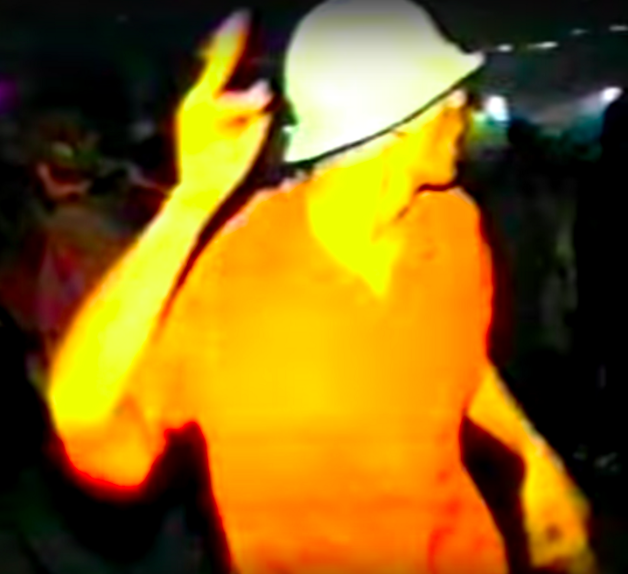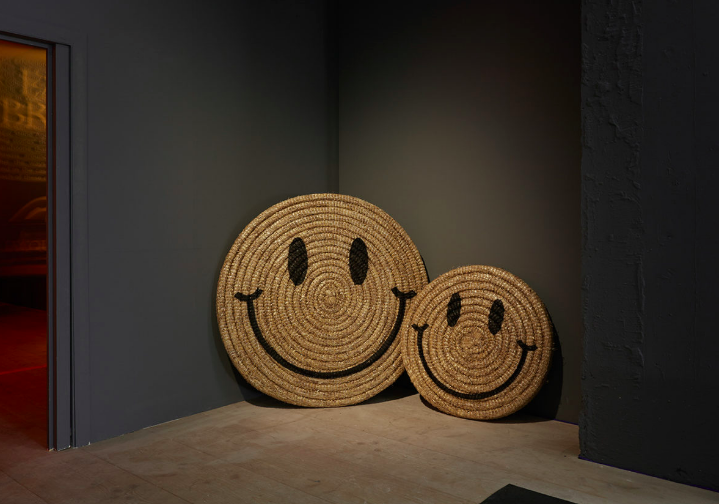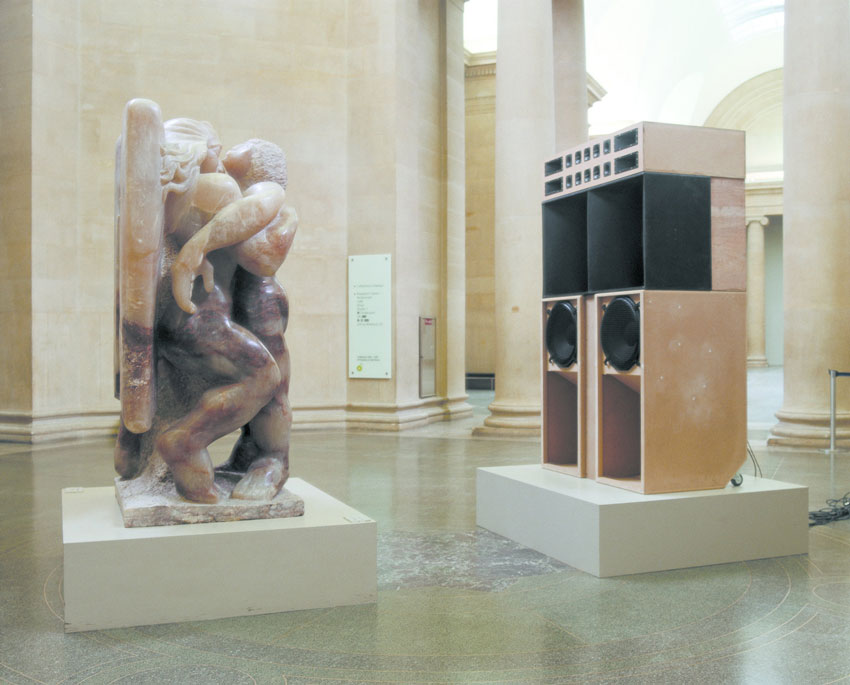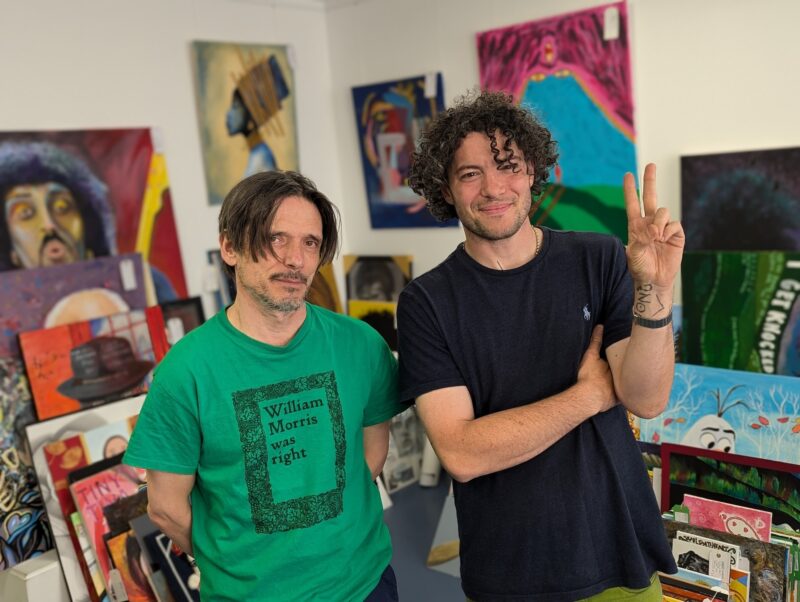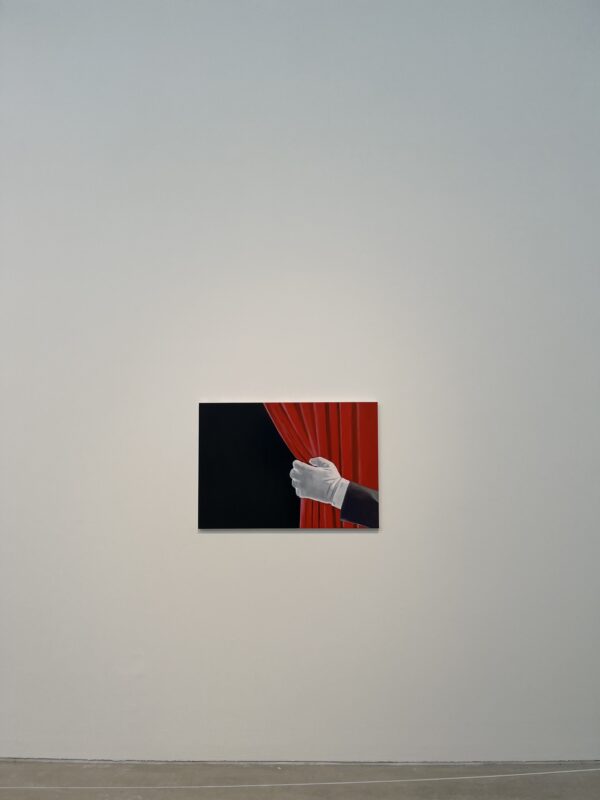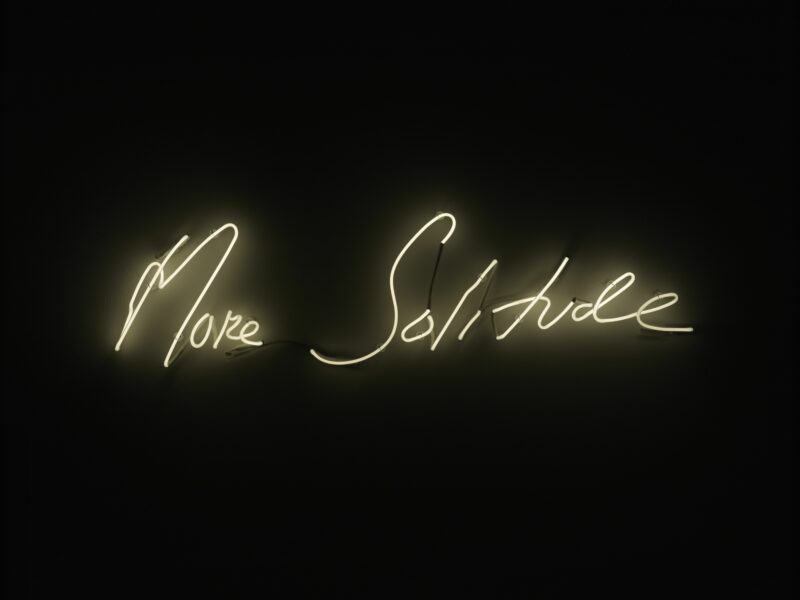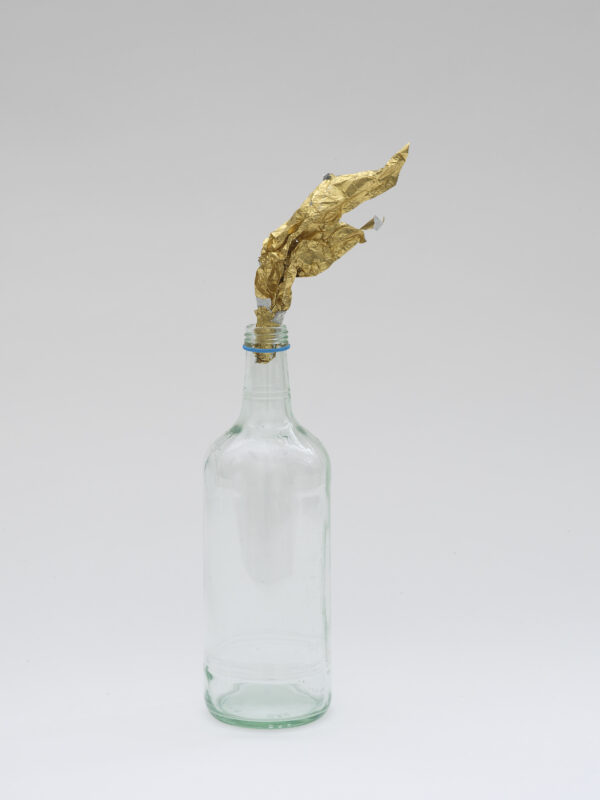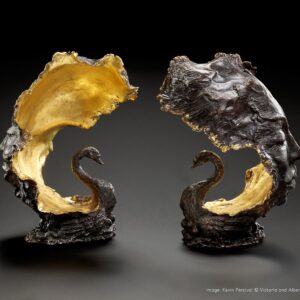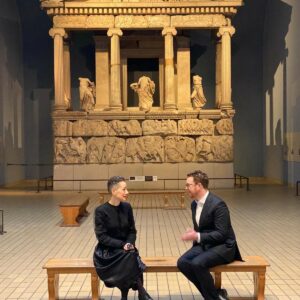The UK is on the verge of Brexit, in political deadlock, and public spending cuts continue to bite – things have definitely been better. Saying that, it was under a Thatcher government and in a similar climate of austerity, anxiety and tribulation that an important youth movement was spawned. A movement that would arguably be the last bonafide, original and liberated subculture of our time.
30 years after the second Summer of Love, rave culture’s influence still looms large in music, fashion, art and culture. Artists like Jeremy Deller create historical documentaries of the rave scene with Everybody In The Place – using rare and unseen archive footage, showing abandoned warehouse raves and the chaotic release of the dance floor – while fashion groups like Wavey Garms dress London’s youth in impeccably researched, vintage rave attire.
Rave culture has reached full throwback status, even to the point of having ’90s rave’ novelty nights at Ministry of Sound. Clubs are filled with bucket hats, whistles and over-sized trainers, while kids who weren’t born the first time round dance to acid house and hardcore like some kind of pilled-up historical reenactment; with the same obsessive attention to detail.
Misty eyed nostalgia and the inevitable repetitive cycle of fashion can account for part of the current facsimile of rave, but why is it still so present in contemporary art?
From artist Mark Leckey filling gallery spaces with overpowering, monolithic sound systems and films that depict the early rave scene – like Fiorucci made me Hardcore and the semi-autobiographical Dream English Kid – to Jeremy Deller’s fetishisation of acid house smiley faces and fascination with the style of the time, to younger artists like Eddie Peake installing London pirate radio giants Kool FM to broadcast from White Cube Bermondsey during his exhibition Concrete Pitch, it seems rave and what it went on to create is ever present in the minds of some of the biggest names in contemporary art.
It’s even had an impact across the pond with artist Corey Arcangel producing tongue in cheek, transatlantic takes on rave with his pieces 414–3-RAVE-95 – which he says “revisits the ‘rave’ dance party phenomenon of the early to mid-1990s” – and Cat Rave.
Whether it’s the freedom of the subculture that is so sorely lacking in contemporary movements of its kind, boring old nostalgia or a fascination with something excitingly alien – rave‘s’ influence is one that still manifests in myriad forms in art and culture.
The introduction of ecstasy to the UK party scene in the mid-1980s and the influence of Chicago House music created a wave of underground parties that were like nothing Britain had seen before.
The UK adopted music from the US, imported drugs from Europe and created pockets of hedonistic ravers whose main concerns were good music and a good time. Fashion became colourful and baggy, decorated with smiley faces and Om symbols. Rave flyers depicted utopian worlds filled with cyborgs and fractal landscapes, using Daliesque surrealism to create a sort of neo-psychedelia. The young people of Britain were creating one of the most original scenes and aesthetics since punk, and like punk it would alarm the establishment, cause moral panic and leave its mark in the minds of creatives. While the fledgling scene had started with a handful of cliquey space cadets tripping on acid, rave really came into its own when ecstasy took hold.
Although two of the main components (music and drugs) were essentially foreign imports, rave culture progressed into something quintessentially British, stylistically and sonically. The music began to shift from acid house into harder genres like hardcore and later jungle and ravers became increasingly discerning with their tastes. They were no longer taking LSD at small exclusive parties, they were scoffing e’s in huge outdoor arenas of rave; where all were welcome.
The parties started in the UK’s clubs and warehouses, but as the influx and reputation of ecstasy grew so did the party scene. By the late 1980s huge outdoor raves were cropping up on plots of land across the British countryside. The parties were clandestinely promoted on a word-of-mouth basis using a network of phone numbers that would be called at particular times to find out the locations of the parties. Mark Leckey remembers: “I was down in Brighton and it was ‘cool’ and a bit snobby and elitist and all the rest of it, but then when you got to the hardcore rave scene it completely changed and all the people that you wouldn’t have expected or maybe excluded would look at you as a freaky acid head and everybody was now necking loads of e’s. It’s glib to say that it was just down to drugs but the pull of ecstasy was a big part of it.”
Journalist and author Matthew Collin agrees with this analysis of the movement. “There is a constant friction between two competing ideologies within any culture: the elitist versus the populist, the avant-garde against the mass,” he says in his book Altered State: The Story of Ecstasy Culture and Acid House. “Although each of its phases was marked by such conflicts, Ecstasy culture’s prevailing ethos was inclusive.” Ecstasy had been the driving force behind this new youth movement and became the glue that was holding it all together. The sudden popularity of an illegal drug and the temporary communities of party goers gathering around it seemed to intimidate the establishment. The press didn’t know what to make of it, oscillating between moral panic and taking a jovial interest.“There would be outrage one week then next week it was like, ‘Buy your smiley rave t shirt’,” Leckey explains. “It always felt very manufactured.”
The Criminal Justice and Public Order Act was introduced in 1994 by the Conservative Home Secretary Michael Howard. With its ridiculous stipulations targeting “sounds wholly or predominantly characterised by the emission of a succession of repetitive beats” and the subsequent crack-down on raves, it was instrumental in driving the free party scene much deeper underground with only the real hardcore willing to take the risks involved in holding such events. The press fed into this hostile environment with headlines exclaiming: “ACID HOUSE SEX DRUGS AND MUSIC CULT THREAT TO OUR CHILDREN.” and “£12 TRIP TO AN EVIL NIGHT OF ECSTASY – Drugs Peril Of The Acid House Craze.” There was a feeling that there had been a resounding victory for the right wing government and press, who had put an end to a youth movement that may have been the last of its kind.
The only thing that seemed to remain of rave after the bill was passed was the music, which was rapidly being thrust in to the mainstream. Groups like The Prodigy and Altern 8 were performing on Top Of The Pops while kids up and down the country were drawing smiley faces on their pencil cases.
Music and art have always gone hand in hand, with arguably some of the most interesting contemporary art existing somewhere between the two. Artists such as Mark Leckey, Dinos Chapman, Jeremy Deller and Martin Creed have either integrated music into their work or pursued separate musical projects and endeavours. This love of music could be what makes rave so appealing to contemporary artists.
Leckey tells me: “I never doubt music partly because of its universalism. If you ever do meet someone who doesn’t listen to music that would be very odd and unusual, so it’s something that touches everybody.” Universalism and inclusivity is something that’s often lacking in contemporary art, but is the ethos the rave scene was built on. The inclusive nature of music and its ability to instantly relay a message has a satisfaction to it that the painstaking, analytical interpretation and untangling of structures and discourses of art doesn’t.
“Music works in a different realm to art,” Leckey continues. “What I like about music is that it’s rhythmic, melodic and all the rest of it but within that you can incorporate storytelling, politics, angst in the way that art can never quite do. Art – especially with politics – it’s very difficult to sublimate it in a way that music does. Music has some kind of innate politics to it I think because of who it’s made by. Art is essentially middle class, and when I talk about universalism I’m talking about class, really. Art is still elite, even though that word seems quite dead? – ?it’s still a bourgeois pursuit in a lot of ways. Music for me is a way of countering that.” Could the injection of rave into art be an attempt to satisfyingly simplify it, whilst shunning the bourgeois exclusivity of the art world?
It was the inclusive nature of music that made rave so unifying. As a subculture it seemed to transcend race, class and sexuality. Even though drugs heavily factored into the equation the heartbeat of rave was music. Music – in particular acid house and later hardcore – was given a sort of celestial devotion by ravers, who’d decided to opt out of normality in search of excitement and adventure. Britain was grey, drab and lifeless and desperately lacking in prospects for young people. In contrast, raves were explosions of sound, colour and diversity filled with unknown opportunities and unexpected encounters? – ?they were a much needed departure from the dismal norm that had afflicted Britain. In the face of adversity ravers organised a way of escaping the depressing restraints of Thatcher-driven austerity and unemployment, creating their own communities based around a love of raving.
Artist Thomas Van Linge was born in 1989 in Holland – the same year of the second Summer of Love in the UK – and makes work influenced by the iconography and ethos of that era. His 2018 exhibition Deep Down Inside (named after the house classic Deep Inside by Hardrive) at J.Hammond Projects was an exploration into the physical objects that make up raves as well as the negative press that the scene garnered in the late 80s. Sculptures made from turntable flight cases emblazoned with laser cut motifs were scattered around the space against a sinister backdrop of, a now iconic, anti ecstasy cartoon from The Sun newspaper in 1988. The cartoon is recreated on laser cut sheets of metal and depicts a cloaked Devil offering pills to unsuspecting youths, whilst hidden behind a smiley face.
“I think rave culture in a sense was maybe one of the last collective subcultures or youth movements that was very much tied to – on one hand an industrialised landscape – and on the other hand this feeling of purposelessness,” he tells me. “Whereas now we’re entering into a different age, but I think that was one of the last big collective. youth movements, which collectively responded to its environment. I’m not sure if we have had something of a similar scale or similar power since then.
“Maybe the Summer of Love has been, but it’s not like the music and the scene itself from that point onwards hasn’t evolved in to a completely new thing.”
As well as making art Van Linge produces dance music heavily influenced by early acid house and runs two electronic music record labels, through which he also throws regular parties – an echo of the most vital element of rave, people coming together to dance. Van Linge’s relationships with art and music are equally intense, with one not being able to emerge without the other. “I cannot exist without doing both,” he explains. “So if I only make art I basically want to kill myself – not in a literal sense, but I have this thing inside me that I am trying to get to or get out? – that’s just a part of making things. One part is making artworks: sculptures, videos etc, which is very much a planned way of working for me. I think ahead, I work with with other companies to realise certain productions, I have to gather funds, I have to make decisions which rely on a lot of money so everything is very planned. There’s room for spontaneity, but everything is decided whereas when I make music or when I release music on the label or when I DJ it’s very much in the moment and that is the thing that isn’t really touched when I make art.
“For me I have to experience both.”
If music were the only element that made rave culture so appealing, as a means of relaying messages in art, then surely it wouldn’t have endured to this extent and in so many prominent artists work. Nostalgia could factor into the equation and there is a definitely an element of that in fashion and music, but let’s face it, the function of nostalgia is pretty uninteresting and not particularly powerful. For the appeal of rave to have stuck it out in this way there must be something else. Matthew Wilkinson is a British artist based in LA who thinks there is more to it than music, drugs and dumb nostalgia. He tells me: “I think the symbolism and iconography of rave in art is a great simple example of freedom. It’s was one of the last cultural movements before everything started eating itself and falling in on itself and becoming a postmodern rehash of something else.” Being based in the U.S. Wilkinson sees first hand how far the influence of the British rave scene has stretched but how it has been contorted on its journey: “Sound system culture in general is a different thing here. They look at these [speaker cabinets] and they go ‘oh yeah that reminds me of Miami bass car culture’. Obviously there’s Chicago house music and Detroit techno, but American dance music now – let’s face it – is not the best and they call it EDM. They got into the whole rave thing a lot later here and it became something quite ugly.”
It seems that rave doesn’t travel well, but from what Van Linge tells me it is something that is an unavoidable presence as a settler in the UK: “As soon as I moved to the UK I was of course very much in touch with the Dutch history of rave and gabba. I threw a lot of techno parties in the years before that so I was very much in touch with that specific aesthetic and history. Then when I moved here it was only natural for me to investigate that further than what I had seen on MTV as kid. I think also because I’ve always been interested in the relationship between the developments of youth subcultures and the technology and industry that developed with it or at least at the same time. Looking into the technological and industrial history of London and the buildings and the materials that were attached to it I immediately also encountered the rave aesthetic – it’s hard to miss almost.”
This also raises the question of authenticity. Jeremy Deller and Mark Leckey have both made art heavily influenced by the rave and free party scene, but have approached it from very different angles. Leckey’s work draws from experience producing a semi autobiographical narrative using films and objects while Deller approaches it as a historian – documenting rave with films and performances and taking less of an experiential angle. Both artists are of a similar age and whether they navigated the M25 as kids trying to find parties or not they both lived through the era. Deller is vocal about the fact he was never at these raves, telling Ludovic Hunter-Tilney in the Financial Times that: “At the time I was really interested in it but weirdly I didn’t know how to get to them [raves]. So I missed out.”
Should there be a level of authenticity or experience when documenting cultures of this kind? “There’s this whole idea of ‘back in the day you weren’t there’ but I don’t think that matters at all,” Wilkinson explains. “There’s enough documentation around it and enough people that one can still go an talk to. I mean there’s great old footage on Youtube of parties so it’s all there and tangible. I don’t think you have to had been there to authenticate your gestures.”
When I asked Deller his reasons for documenting and teaching the history of rave he said he wanted to show “the wider picture”. Last month I visited Deller’s Wiltshire Before Christ at 180 The Strand- a collaboration with The Vinyl Factory, photographer David Simms and uber-cool streetwear brand Aries. The show continues Deller’s fascination with Stonehenge and fuses it with rave iconography. Visitors were greeted by large spinning cut-outs of the National Trust logo and beaming acid house smiley faces painted on to straw archery targets. Large photos of eerie figures, hanging out in neolithic sites, dressed in hoodies and pagan robes decorated with slogans like “Make Archaeology Sexy Again” hang next to posters from the Stonehenge Festival, that used to take place on the Summer Solstice.
The exhibition and products, made by Aries, explored the ritualistic aspects of the neolithic period and the parallels they have with free parties. When asked what the link between rave culture and neolithic mysticism Deller told me: “What links them is ritual, abandonment, intoxication and the countryside.” Deller isn’t the only artist to make this link between rave, folklore, magic and mysticism. There is something about raves and their use of the British countryside that connects the ceremonial behaviour of druids and pagans and the structures they built. Wilkinson tells me: “It’s really ritualistic? – when you think about stone circles and solstice – Making these constructions [sound systems] to be almost worshipped. The big raves always happen on May Day or the solstice – they used to do the festival next to Stone Henge. It taps into our relationship with the land that people turn against nowadays or have done since the 18th century. It is that undeniable link and I think that’s why – going back to America’s relationship to rave culture they don’t necessarily touch that side of it.”
Raves were essentially temporary communities that would crop up on the landscape, erect monuments (sound systems), worship them for a few days then move on. These objects of technology often had a magical affinity. Leckey has often talked about the connection between magic and technology and tells me: “The more technology advances us into the future the more it paradoxically boomerangs us into the past where we start to think with this animistic mindset where everything’s alive. In an aboriginal sense of like rocks and trees and animals talking to us – technology is actually producing the same affect where everything that surrounds us is able to communicate with us in some form or other.
“It comes from trying to grasp technology. The more pervasive, the more ubiquitous technology becomes the more, to me, it feels more magical – not in a good way necessarily, but it allows me to do all these things that once seemed impossible.”
The objects that make up a rave – sound systems, flight cases, turntables, pills – are often fetishised in art or seen to be just as compelling as art itself. Wilkinson explains: “There’s something incredible about big sound systems – just the engineering of it. These big bass bins only came into being in the late 20th century so they’re emblematic of our time. They’re these big monoliths and the physicality of standing next to these things is fascinating. The sound systems and cases etc is what you bring – it’s the only constant in the environment and the scenery is a quarry or an old factory or disused air field from WWII.”
Leckey informs me about his famous sound system sculptures saying: “I don’t show them anymore to be honest. It’s complicated but at the time – when I was showing sound systems and Fiorucci – I had an axe to grind with the art world, which was to say these things come from a culture that I came from and I think they are just as valid as anything that you’ve got in your museum. A sound system is as sophisticated and as aesthetically pleasing as any sculpture.”
Turning these objects into art can arguably change the meaning they have attached them which isn’t necessarily a positive thing. “Sound systems for me came from raves and it feels like they don’t belong to me anymore,” Leckey explains. “I still have that axe to grind, but I think that’s perhaps going about it the wrong way. Basically you’re this scout that’s going out and acting as this go-between and you’re bringing things from a culture that most people in museums don’t know about and you’re going, ‘Look at this’ and they go ‘Oh that’s exciting’ and they introduce it to the galleries and then it gets sold, which is problematic as well. In the end it just makes me quite uncomfortable.”
Contemporary art, like most creative industries, is sadly governed by money. When something like a subculture is absorbed by the commercial side of art and somehow tamed or cut up into easily digested pieces, made palatable for a particular audience, there is a something disheartening about it. Should movements like rave culture be kept solely for those who dared to experience them and a million miles away from contemporary art, or is documenting them in this way as important as documenting any part of history? Whatever the answer may be, rave culture’s impact as one of the most important and original subcultures of our time is undeniable and its influence doesn’t show any signs of diminishing. “It was a futuristic movement – a movement of futuristic music, of doing new things, new drugs – a new kind of love,” Van Linge tells me. “I’m not sure whether the same group of people could go through that again – maybe if you talk about different cultures – maybe from a typical Eurocentric perspective, but maybe not. The world is a lot bigger.”
